The Hoover Dam: A Modern Feat of Engineering
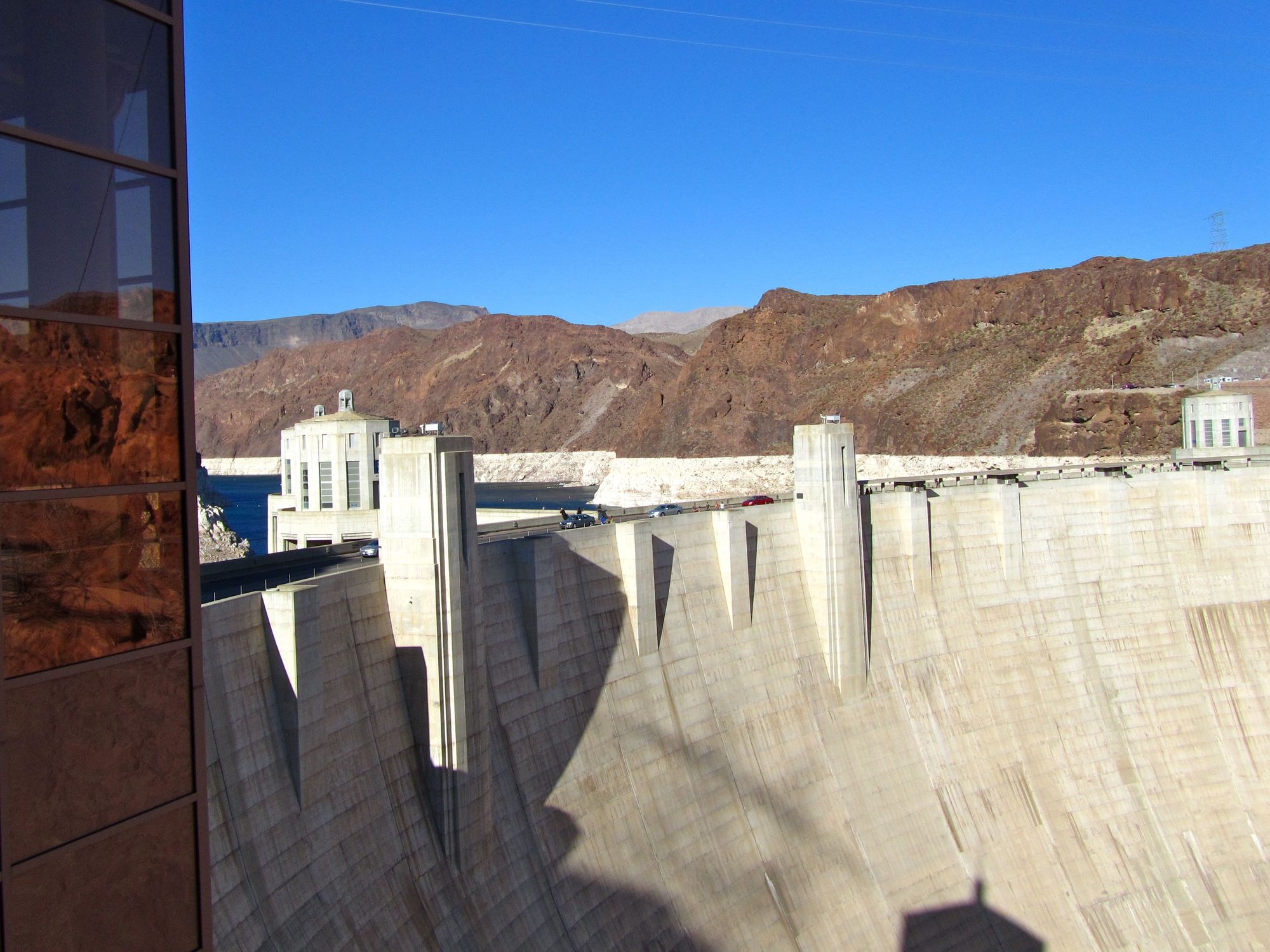
I'll admit that I never knew much about the Hoover Dam.
I knew that it was a large concrete dam on the Colorado River somewhere out West. But that was about as far as my knowledge went.
Well, it turns out that there's a lot to know about the Hoover Dam — and a lot that's actually quite fascinating.
Even though I had always believed that the Hoover Dam was built to harness the power of the Colorado River in order to supply power to nearby towns and cities in Nevada and Arizona, the truth is actually almost the opposite — the dam was actually built to save the surrounding communities from the wrath of the Colorado River, which was known for habitually flooding and causing all sorts of issues.
As early as 1900, the U.S. government began exploring Black Canyon (where the present dam sits) and nearby Boulder Canyon to see if either one could potentially support a dam that could alleviate the area's flooding woes, and at the same time aid in irrigation and produce hydroelectric power.
Black Canyon was finally settled upon by the Bureau of Reclamation, and Congress approved the dam project in 1928.
Despite America suffering from the Great Depression, construction of the concrete behemoth on the Nevada/Arizona border began in 1931. Even though a similar project had never been undertaken and many of the construction techniques were untested, the dam was finished by 1936 — two years ahead of schedule.
The Hoover Dam is an arch-gravity dam, which is thicker at the bottom (660 feet) and thinner on top (45 feet). It comprises of roughly 6.6 million TONS of concrete, or 3,250,000 cubic yards — enough to pave a 2-lane highway from New York to San Francisco.
There's so much concrete in this dam that it had to be poured block by block with an intricate cooling system in place. If it had been poured all at once, it would still be cooling and solidifying today.
I never really considered visiting the Hoover Dam until I discovered that the route my sister and I planned to take during our summer road trip would have us passing right by the dam. The highway actually used to go right over the Hoover Dam (with the traffic driving on top of it), but they opened a bypass bridge in 2010 to give the dam a break.
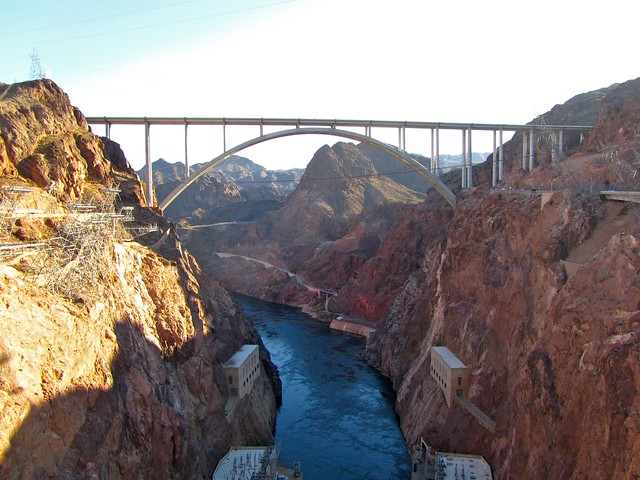
We headed over the bypass, and then detoured to the Hoover Dam to take in this engineering marvel.
You really can't understand how huge this dam is until you see it for yourself in person. It is massive.
It's amazing to stand on top of it and realize that men built this with their bare hands in the 1930s. It certainly wasn't easy work.
A stroll through the small museum at the dam's visitor center stresses how dangerous it was to be one of the thousands of men employed to construct the Hoover Dam. 112 men lost their lives in the 5 years that it took to build the dam, and everyone employed during that time was paid based on how dangerous their job was.
The legacy of those men remains. Not only is the dam stronger than ever today, but its power station supplies power to Nevada, Arizona, and California, and the lake the dam has formed on the Nevada side – Lake Mead – is a popular recreation area. The nearby town of Boulder City, which was built to house the thousands of men building the dam, is still growing, being named one of the best places to retire in the U.S. in 2009.
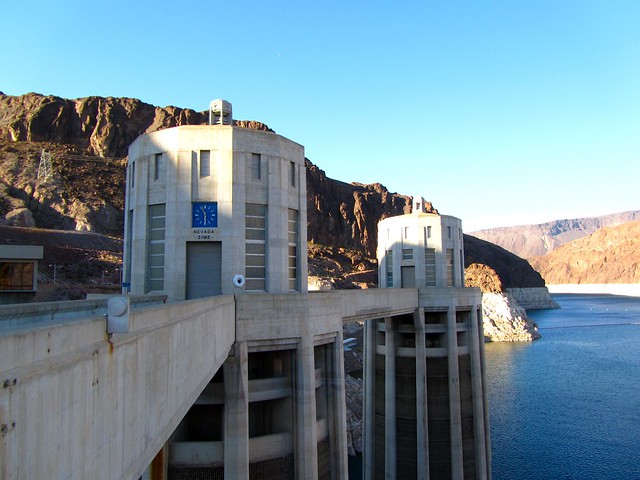
And, of course, despite my lack of burning desire to visit, the Hoover Dam is a rather large destination for tourists. Roughly 1 million people visit the dam each year and take the tours offered by the Bureau of Reclamation.
IF YOU GO
If you're considering visiting the Hoover Dam yourself, here are DOs and DON'Ts to keep in mind:
DON'T pay for parking. Since the main highway no longer passes over the dam, you'll come in from the Nevada side. There is a large parking garage here that's open from 8 a.m.-5:15 p.m. that will cost you $7 per car. But there's really no need to pay for parking. Simply drive across the dam to the Arizona side, where there's a free parking lot. Then you can stroll back across the dam to get to the visitor's center.
DO drive across the dam. Even if you're not going to take a tour or stick around very long, driving across the dam is pretty cool — it's certainly not something you get to do everyday.
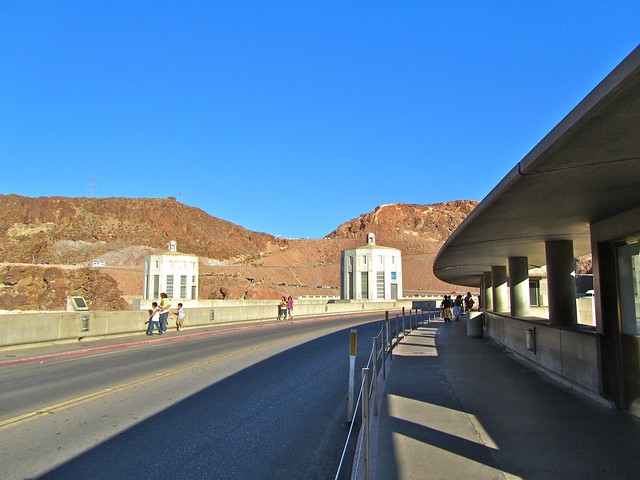
DON'T pay to visit the visitor center only. It will cost you $8 to get into the visitor center. While you can get a nice view of the dam here and have access to a small museum packed with information, it's not worth $8 on its own. Instead…
DO pay for a tour. If you get there early enough, go ahead and splurge on the $30 Hoover Dam Tour, which is a 1-hour guided tour of the dam and the powerplant, as well as admission to the visitor center. This tour allows you to visit some exclusive parts of the dam and takes you INTO the dam itself. Or, for $11, you can get a 30-minute guided tour of the powerplant (including some of the dam passageways) and admission to the visitor center. If you aren't interested in the long guided tour but would still like to visit the visitor center, I would definitely recommend paying the extra $3 to take the powerplant tour. It will make the money you spend more worth it.
Hoover Dam tours from Las Vegas
Don't have a car but still want to visit the Hoover Dam? It's located less than an hour from Las Vegas, meaning you can easily book a day trip. Check out these Hoover Dam tours from Las Vegas:
- Ultimate Hoover Dam Tour
- Grand Canyon West Rim and Hoover Dam Tour from Las Vegas
- Hoover Dam Tour With Lake Mead Cruise
Have you ever visited the Hoover Dam? If not, is it a place you would stop at?

Amanda Williams is the award-winning blogger behind A Dangerous Business Travel Blog. She has traveled to more than 60 countries on 6 continents from her home base in Ohio, specializing in experiential and thoughtful travel through the US, Europe, and rest of the world. Amanda only shares tips based on her personal experiences and places she's actually traveled!

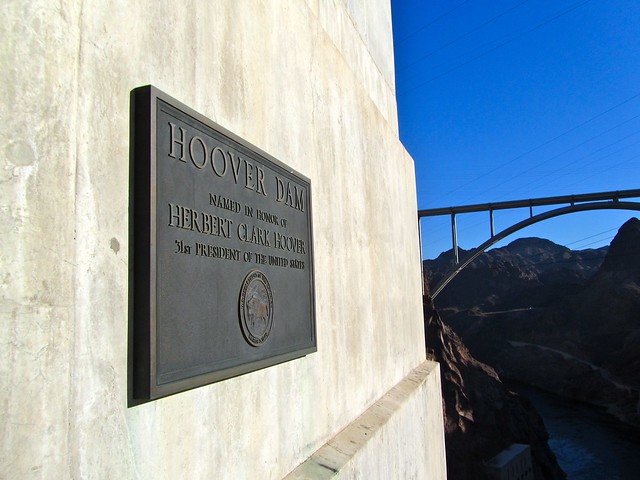
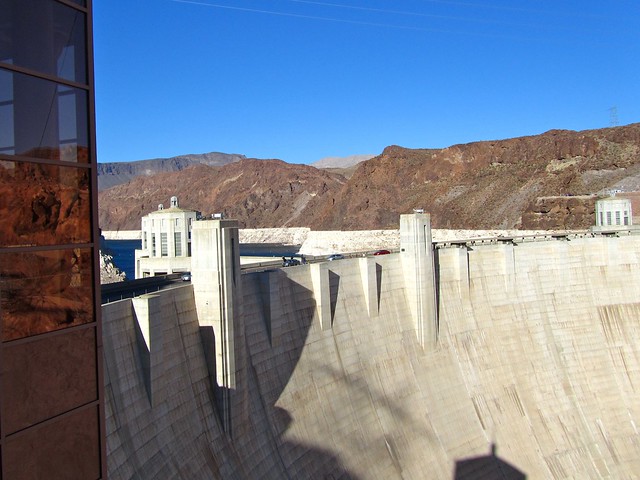

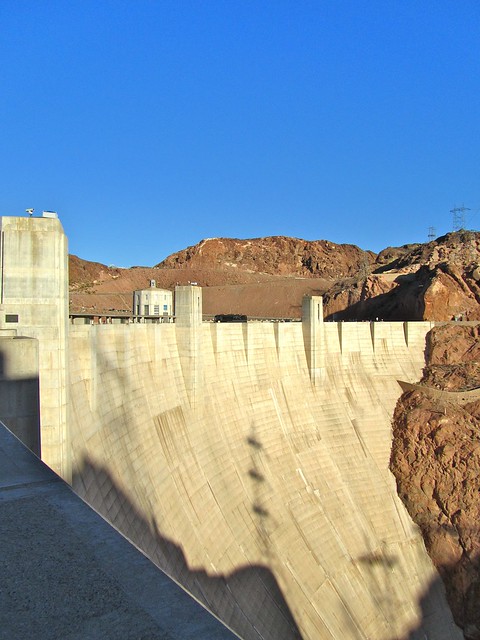
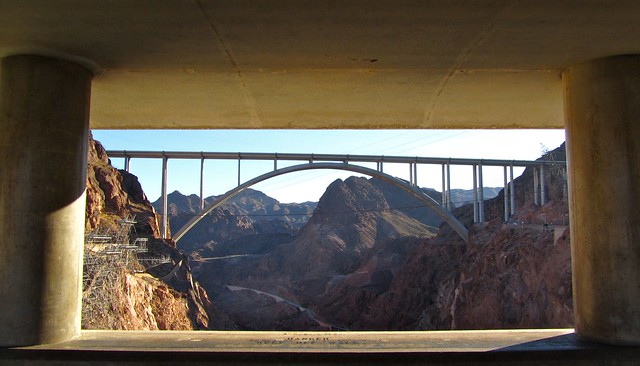









I visited Hoover Dam way back in 1966 for my 10th birthday I was amazed how big it was I know I’m going to be 65 in August it still amazes me not only is big but it’s a beautiful d a m and the people that work there are good people very nice and intelligent it’s worth going to see
Today is October 16, 2018. Don’t know if blog is still up, thought I’d throw this here.
Can one still park on Arizona side and walk back to Visitor Center? When walking to VC, are you walking over dam?
What times are tours?
I will be that away this weekend. Saw a documentary of the building of Hoover, incredible, figured it’d be really cool to see and walk inside.
Thanks for any post to these questions.
As far as I know, the parking situation is still the same. As for tour times, I would check the Dam’s website: https://www.usbr.gov/lc/hooverdam/service/DamTour.html
I will only have a limited amount of time driving back to Las Vegas airport from Grand Canyon, but I wondered how long you spent at the Dam to get those great photos, and did I understand correctly that you didn’t do the Tour and were still able to get those views? I would love to do the Tour but simply can’t squeeze it in.
I don’t remember how long we spent at the Dam, but it wasn’t that long – maybe an hour or so? We didn’t do one of the tours, either, but spent some time looking at the exhibits in the visitor center.
[…] A Dangerous Business trip to Hoover […]
I went to the grand canyons and we spent some time around the hoover dam. it was magnificent looking down at the views although wasn’t so good for my friend how was afraid of heights. Best Wishes x.
[…] Do’s and dont’s when you’re visiting Hoover Dam. […]
We had planned a tour to Vegas & the dam but my adult daughter read how dangerous the roads were to travel to the dam from Vegas due to steep inclines and curves/bends in the road and refused to allow my grandson to go on the tour! Therefore, we cancelled our trip! Are the roads that dangerous to drive?
I’ve driven that road to/from Vegas a few times. It’s a bit steep in some places, and there are a few large curves, but I wouldn’t classify it as super dangerous so long as you know how to drive!
I’m actually not surprised it took 6.6 million tons of concrete. I have been to the Hoover dam and it is absolutely gigantic. I think more dams that size could and should be made.
Found this old post. We did Hoover Dam. I first went over 30 years ago as a 6-year old, now we just went back as adults. It’s amazing to see it. We skipped the tours (tight on time), but still found it to be a worthwhile experience.
It’s so impressive, isn’t it??
[…] The Hoover Dam […]
Went to the dam last year and paid for parking. Def did NOT know there was a free lot! Darn! or should I say……dam! Also sat in traffic for at least an hour waiting to cross. It was 109 degrees out and so this was a less than fun part of our day. However, pretty cool to see it and your post has shared something I didn’t know!
I had a friend who visited the dam earlier in the year and clued me in on the free lot. I think it’s technically an “overflow” lot, but I don’t think there are any rules on when you can or can’t park there. That sucks that it took you an hour to cross, though! Yuck. Was this before the bypass bridge was open?
Thanks for the information… we’re planning a US road trip in 2013 (ugh, so far away) and I’m keen to visit the HD. The dos and don’ts will come in handy!
So glad you found this useful! And believe me, that 2013 road trip will be here before you know it! At least you have something to look forward to. 🙂
Wait, so are you NOT allowed to drive over it anymore? We did when we did the first of our family road trips back in 1991:-) Even as a 9 year old, I thought it was really cool (and of course, I didn’t know anything about it before hand).
You ARE still allowed to drive over it, but the highway no longer passes over it like it used to. Now, you have to exit the highway to get to the dam.
Neat, I never knew that about the Colorado flooding being the reason for the dam. I’m hoping to visit here on my upcoming trip to Vegas.
It’s a great detour to take on the way to or from Vegas!
We stoppped at the Hoover Dam on our Grand Canyon tour and it was a lot smaller than I imagined it would be! Perhaps it’s just the perspective we had compared to the movies we’d seen the Dam featured in.
It was definitely worth the quick stop we made although I wouldn’t visit it again except to take the tour.
Really?? See, for me it was the opposite! It was much bigger than I had imagined. But I agree — I wouldn’t visit again unless I could take the tour, since we didn’t get a chance to this time.
And actually, the new bridge is its own special modern engineering marvel.
https://youtube.com/watch?v=8DODlV1ydOQ
The music in that video is so intense!
It is pretty intense. As was the project. I watched a documentary on the bridge a few years ago and as with many projects of that sort it was a challenge to get things going. There are high winds that come down the canyon and they make it interesting when you’re in a cable car or trying to lower several tons of steel onto a tiny support. But clearly they succeeded 🙂
I went to Vegas with a GF one year and after a day I was OVER the whole Vegas thing and rented a car so we could got the dam. It was a glorious (hot!) afternoon away from the glitz of Vegas.
Haha, what’s not to love about Vegas?? 😉 But yes, the dam makes a nice afternoon trip from Sin City!
Well, I’m not much for gambling. As in I’m totally uninterested. And I’m very un-fond of cigarette smoke. We had a good enough time despite my being forced to join the GF on a roller coaster. I wasn’t pleased with that at all. It was a nice break from the winter rains of northern California, but not much more. Visiting the dam was by far the high point of my trip. 🙂
I felt like such a nerd when I went to Hoover Dam, but it was really, really cool! The thing that struck me most was that the people who built the dam didn’t have enough hard hats, so they made hard hats by dipping their baseball caps in tar!!! BLOWS MY MIND
No shame in geeking out at the Hoover Dam! It is indeed very cool. I just wish we would have gotten there early enough to take a tour! Next time.